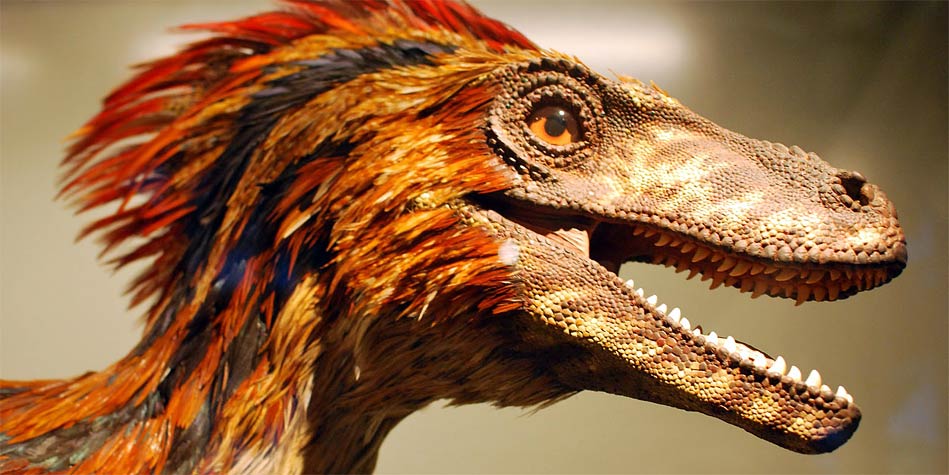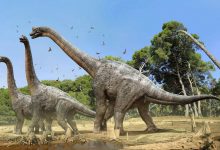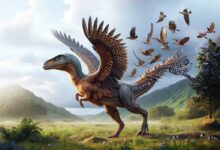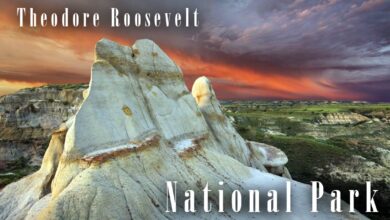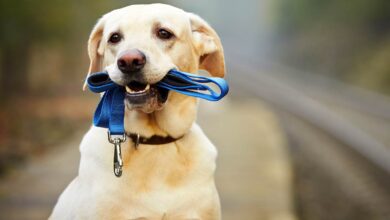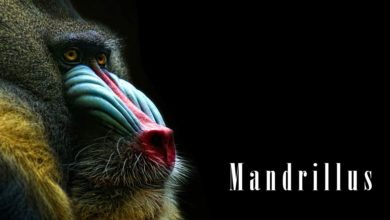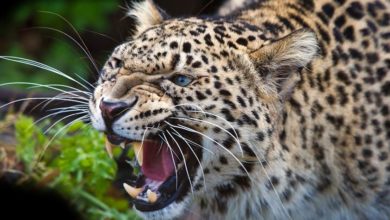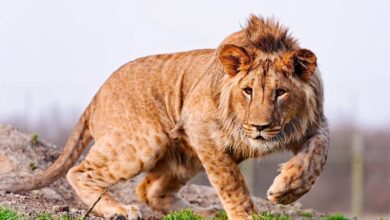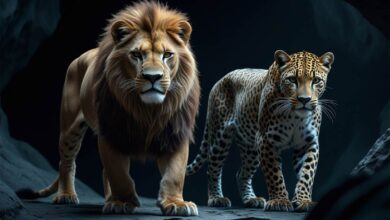Deinonychus – terrible claw
Deinonychus – terrible claw
Deinonychus and Velociraptor were shorter than a small car and not heavier than an adult human. Although in the Jurassic Park movie their roles have been changed, both dinosaurs, however, had an extremely dangerous weapon: a curved claw, with which they tore apart their victims…
Classification
- Kingdom: Animalia
- Phylum: Chordata
- Clade: Dinosauria
- Order: Saurischia
- Suborder: Theropoda
- Family: †Dromaeosauridae
- Subfamily: †Dromaeosaurinae
- Genus: †Deinonychus
- Species: Deinonychus antirrhopus
- Synononym: Velociraptor antirrhopus
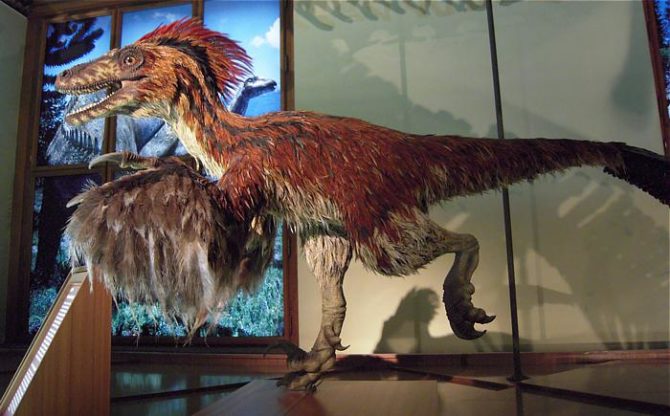
Name
The generic name of this dinosaur consists of the Greek words δεινός, ‘terrible’ and ὄνυξ, genitive ὄνυχος ‘claw’). This name was created from a huge (12-13 cm) sickle claw located on the feet of this dinosaur. Species name antirrhopus means “counter balance” and refers to the construction of the tail, which because of its stiffness, was a counterweight to the body while running.
Discovery and characteristics
The first fossils of Deinonychus, one of the most predatory dinosaurs, were not found until 1964. In the American state of Wyoming, paleontologists have discovered the remains of several individuals of this species and the ornithopod Tenontosaurus which dinosaurs probably wanted to hunt. We can only guess what happened.
One of the interpretations is that in a chase with Tenontosaurus (an animal of the horse size), a pack of Deinonychus, numbering more than 4 individuals, threw up. The deaths of at least four assailants are evidence of large losses that can be incurred by herds of predators in such clashes.
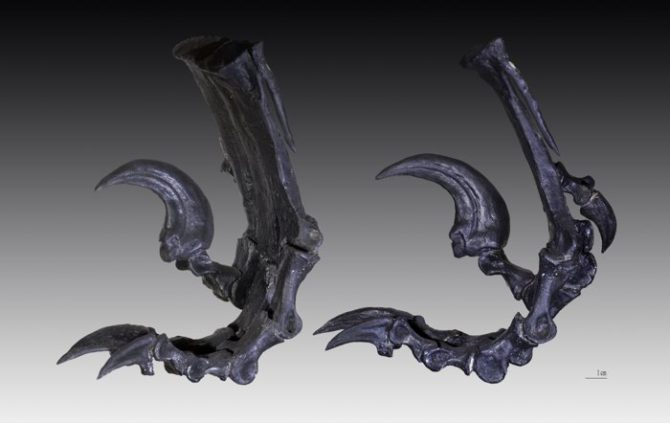
Claws
Researchers think that Deinonychus (“terrible claw”) cut sickle-claws and inflicted deep abdominal wounds on large victims – as Dr. Alan Grant (Sam Neill) shows in Jurassic Park. The predator could jump up, striking at the same time with both legs. Hidden by a horde of assailants Tenontosaurus could try to trap them or knock them down with a heavy tail. However, even if he killed several of them in this way, the rest would cornea the herbivore, inflicting further wounds on all sides. Soon the bleeding victim weakened and fell.
This discovery undermined the traditional ideas of dinosaurs as lumbering reptiles with small brains. Deinonychus had a body no longer than a small car and no heavier than a man, but it was better armed than other similar predatory dinosaurs.
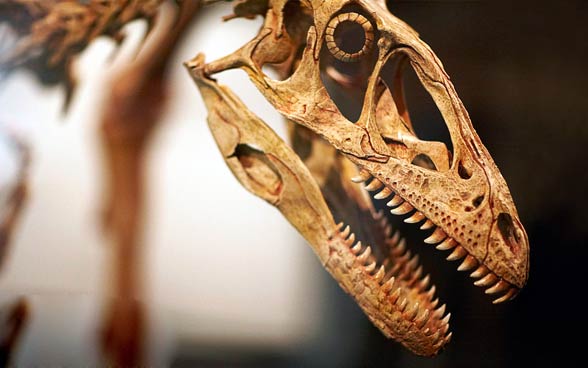
Strong jaws were filled with large teeth. Long, strong front paws ended with three gripping fingers with sharp claws. The most terrible weapon, however, was the sickle claw of the second toe of muscular legs.
“Terrible claw” refers to the unusually large, sickle-shaped talon on the second toe of each hind foot. It was typical of the Dromaeosauridae family, to which Deinonychus belonged, and the Mongolian Velociraptor (“quick robber” / “swift seizer”), slightly smaller than that. Deinonychus could ominously raise that claw; when he stood, the weight rested on the third and fourth longer fingers.
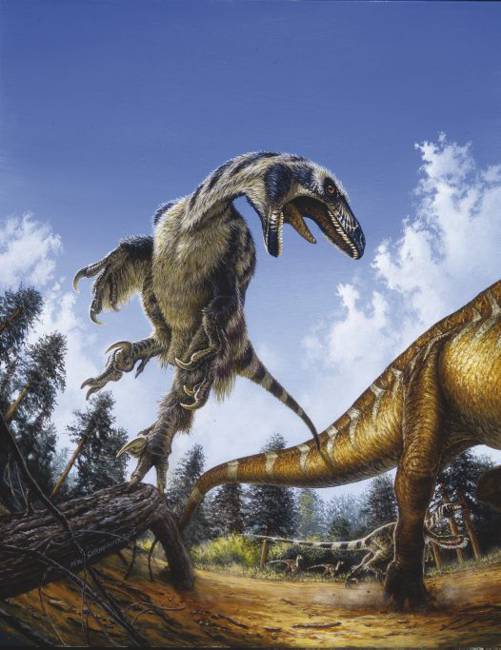
Hunting
Researchers think that the Deinonychus were combing the area with packets. Each individual was eating lizards or mammals that he encountered, but the larger animals were hunted together by the members of the herd. Together they managed to knock down dinosaurs bigger than themselves. Hunting could be like a situation when the wolves unite to hunt a deer. One of the reasons for such a hypothesis is to find the remains of 4 Deinonychus next to a much larger Tenontosaurus.
Deinonychus probably lifted the long second finger primarily to avoid dulling the sharp point of the claw against the ground during walking or running. The Deinonychus’ claws were a weapon disproportionately large in relation to the predator’s body size, as were the giant tusks of saber-toothed cats.
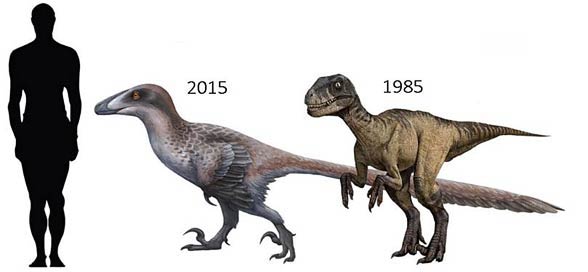
Data / Dimensions
Deinonychus
- Length: up to 3.4 m (11 ft 2 in)
- Hip height: 87 cm (2 ft 10 in)
- Weight: 73 – 100 kg (161 – 220 lb)
- Claw: 12-13 cm (4.7 – 5.1 in)
- Lived: 115-108 million years ago
- Food: herbivorous dinosaurs
- Occurrence: USA (Montana, Wyoming)
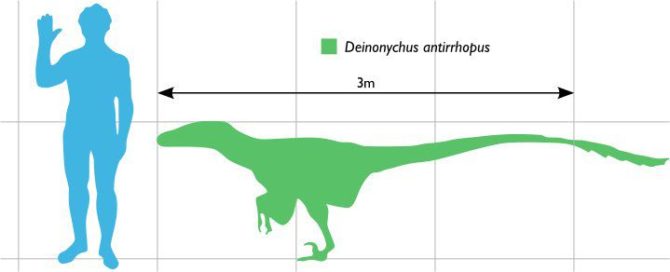
Deinonychus – interesting facts
- The prototype of the screen Velociraptor in the Jurassic Park Trilogy and Jurassic World by Steven Spielberg, where the height of these reptiles exceeded 2 meters is Deinonychus, a representative of Dromaeosauridae family. It is much larger than Velociraptor. Velociraptor, at its real size, would not look as dangerous on the screen, while Deinonychus has a less media name than Velociraptor. The animals depicted in the film were much more intelligent than they were in reality.
- Deinonychus belongs to the dinosaurs most closely related to birds.
- Deinonychus inhabited flood plains, forests, deltas and lagoons.
- Deinonychus hunted probably for Iguanodons.
- Deinonychus was the first raptor cloned in the InGen laboratories. It is known more as a Velociraptor. Scientists from InGen originally wanted to recreate the Velociraptor, but due to gaps in the genetic code, the missing parts of the code were replaced by the Deinonychus code. The result is Velociraptor antirrhopus, whose behavior is similar and has the same aggressive characteristics. After this experiment, Deinonychus was removed from the list of cloned InGen species as being too dangerous.
- Probably Deinonychus could climb trees.
- Deinonychus during the run raised his claw, so that he would not interfere while running and not to blunt.
- Most likely, the claw was used not for cutting, but for stabbing. Thus falls the myth of the wounds of the meter length given by Deinonychus.
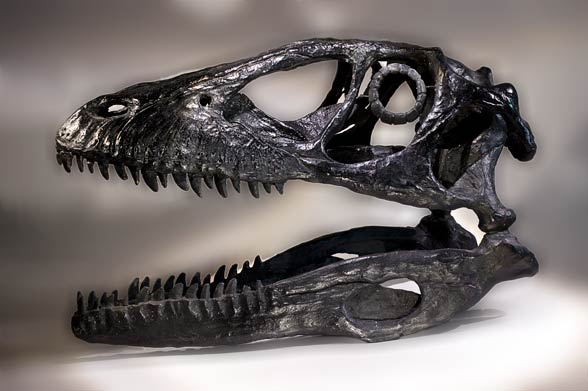
Recommended
- Dinosaurs
- Dinosaurs database
- The largest dinosaurs TOP 10
- Predatory dinosaurs
- Dinosaurs from Jurassic World
- Animals & dinosaurs records
- The longest dinosaurs. Sauropods Top 10
- The heaviest dinosaurs – Top 10
- The longest predatory dinosaurs. Theropods Top 10
- The heaviest predatory dinosaurs Top 10
- The longest and largest ornithopods
- The heaviest ornithopods Top 10
- The longest and largest ceratopsians
- The smallest dinosaurs Top 10
- The smallest sauropods Top 10
- The largest pterosaurs Top 10
- The fastest animals – Top 100
- The fastest birds – Top 10

